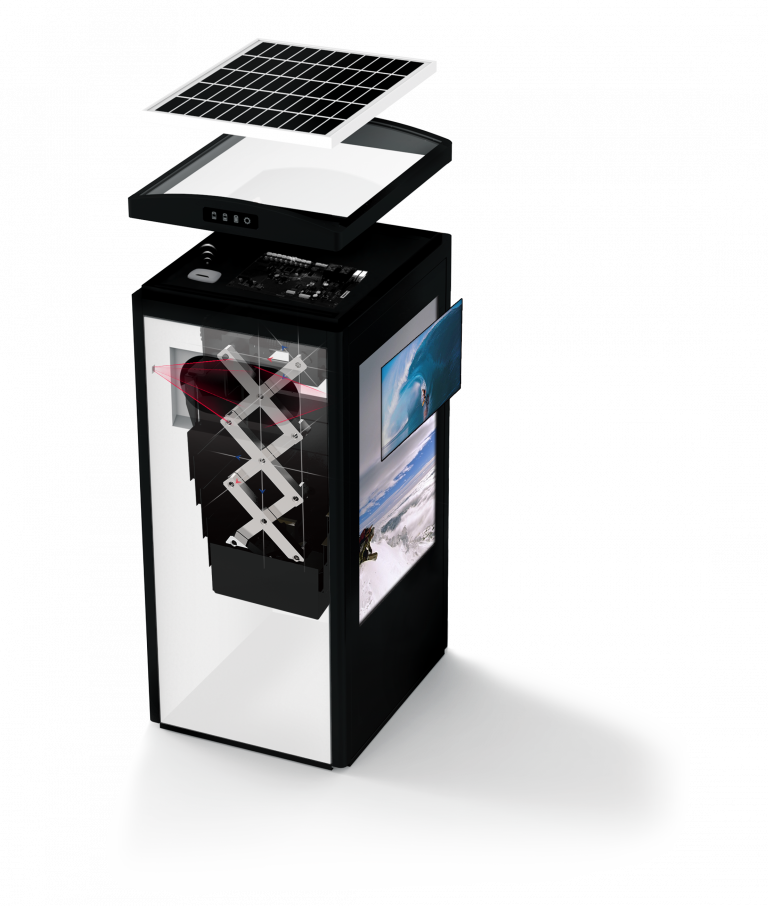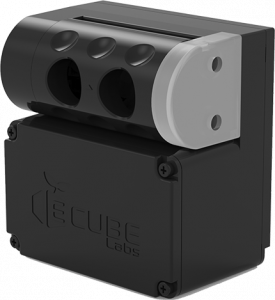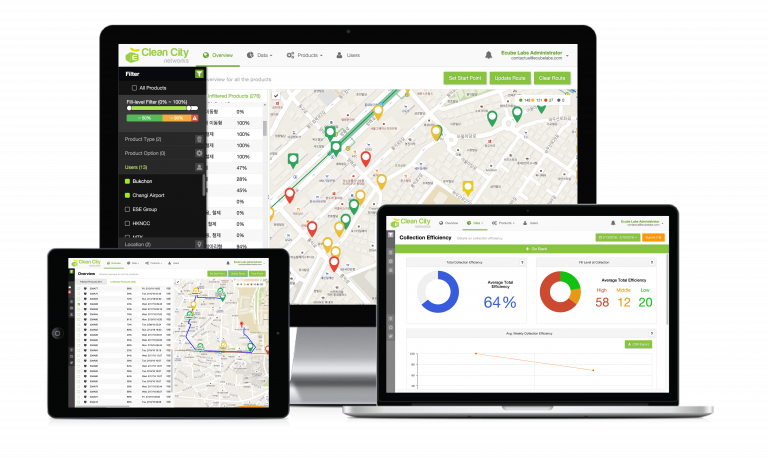Cities around the world are facing great challenges due to increasing urbanization, and one of the major challenges is the rising amount of generated waste and littering due to high demand for food products and other essentials. Public waste bins are filling up faster than ever and inevitably many of the bins end up overflowing before collected, causing not only cluttered streets and bad odors but also negative health and environmental impacts.
While in most developed countries the waste collection processes are efficient enough to prevent major disasters from happening, in some cities the careless attitudes of local bodies towards maintaining cleanliness have caused deadly results. One of the cities with major waste problems has been Naples, where the mafia is accused of dumping toxic waste around the city and thereby causing high rates of cancer, allergies and birth defects. Another good example of a city suffering from unhygienic conditions was Surat in India, where a pneumonic plague epidemic broke out in 1994, causing 52 deaths.
Although not as deadly risky as dumping tons of toxic waste around the city borders, overflowing waste containers are still a great nuisance and a risk to our health and environment. If you are a business owner, overflowing bins pose an ever greater danger. In this article, we present five outcomes of overflowing garbage bins and suggest how modern technology could ease the problems by increasing the efficiency of waste collections and informing the waste handlers before the bins overflow.
 1. Bacteria, insects and vermin thrive from garbage
1. Bacteria, insects and vermin thrive from garbage
Overflowing waste bins are an ideal breeding ground for bacteria, insects and vermin. The flies that visit the garbage are also the same flies that roam around your lunch buffet and drop their offsprings on your plate. By doing so, they increase the risk of you contracting with salmonella, which causes typhoid fever, food poisoning, enteric fever, gastroenteritis, and other major illnesses. Besides flies, other animals that thrive from the garbage in and around the containers include rats, foxes and stray dogs.
2. Overflowing waste causes air pollution and respiratory diseases
One of the outcomes of overflowing garbage is air pollution, which causes various respiratory diseases and other adverse health effects as contaminants are absorbed from lungs into other parts of the body. The toxic substances in air contaminated by waste include carbon dioxide, nitrous oxide and methane. In everyday life we identify the polluted air especially through bad odors, which are usually caused by decomposing and liquid waste items.
3. Garbage contaminates surface waters, which affects all ecosystems
Garbage and liquid waste that end up in water bodies negatively change the chemical composition of the water. Technically, this type of pollution is called water pollution. It affects all ecosystems existing in the water, including fish and other animals that drink the polluted water. Hazardous household waste items such as batteries, computer equipment and leftover paints can be particularly dangerous for surface waters.
4. Direct handling of overflowing waste exposes for health risks
For waste collection staff the risks of picking up and handling overflowing garbage include infections, chronic diseases and accidents. Direct contact with waste can result in skin and blood infections through infected wounds, various illnesses resulting from the bites of animals feeding on the waste, and intestinal infections transmitted by flies feeding on the waste. Picking up overflowing garbage is also risky due to sharp objects, needles and potentially hazardous waste.
5. Inefficient waste control is bad for municipal wellbeing
Besides causing all sorts of health and environmental issues, overflowing garbage is a public nuisance and eyesore. Everyone wants to live and visit places that are fresh, clean and healthy. A smelly city with poor sanitation and trash all over the place does not attract people or tourists, let alone investments. Cities keep losing money, and they also miss out on the revenue and job opportunities coming from proper waste control and recycling.
How to prevent waste bins from overflowing?
Although cities could try to prevent the overflowing of their bins simply by installing larger bins or assigning more staff members on collection services, there are also smarter ways to solve the problem.
In high traffic areas such as busy shopping streets, transit stations, and sports stadiums, one of the best ways to eliminate unsightly garbage overflow is to install smart solar-powered trash compactor bins, which can hold up to 8 times more waste than traditional bins thanks to their compaction function. These bins are powered entirely by their solar panels and the bins even inform the waste collection managers in real-time before becoming full, allowing the staff members to take data-driven actions ahead of time.
In lower traffic and remote locations, one of the best ways to prevent bin overflowing is to install a smart fill-level sensor in each bin and utilize a monitoring platform to plan the collections ahead of time. As a result, the containers get collected in time and collection companies increase their efficiency, ultimately reducing operational costs by up to 50 percent. To read



